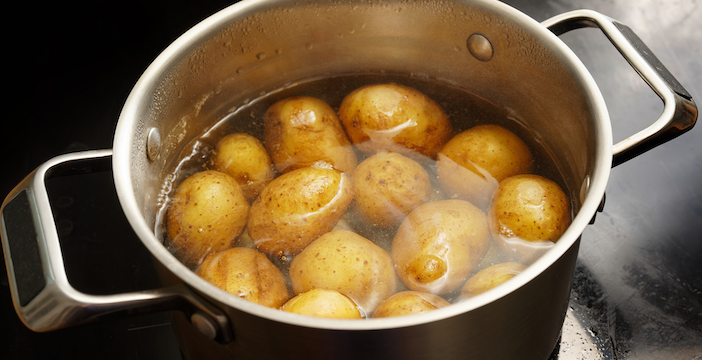
Approximately 40% of people with diabetes will develop some form of diabetic kidney disease in their lifetime, so managing kidney disease along with diabetes is quite common. Each illness can be difficult enough to manage on its own, but can create even more stress when you have to manage both, especially when it comes to meal planning for diabetes and kidney disease.
What is kidney disease?
A simple description of kidney disease in people with diabetes (also known as diabetic nephropathy) is a gradual increase in the amount of protein found in your urine. This could result in your kidneys not working adequately. As kidney function decreases, waste and minerals become hard to remove, and the kidneys must work harder to get rid of them. Some of the key risk factors for kidney disease include long duration of diabetes, poor blood sugar management, high blood pressure, obesity and smoking. Managing your blood sugar and blood pressure are important to slow the progression of kidney disease and to help prevent or minimize other complications of diabetes, such as eye problems or nerve problems.
What are the diet recommendations for managing diabetes and kidney disease?
Diet is one of the most important ways to manage both diabetes and kidney disease. If you’ve been diagnosed with kidney disease because of diabetes, you’ll need to work closely with your healthcare team and with a dietitian to create an eating plan that will help manage your blood sugar levels and reduce the amount of work your kidneys have to do. Even though each person with kidney disease has a different diet prescription, there are a few common nutrients that need special attention. These include potassium, phosphorus, protein and sodium, all of which need to be limited or in some cases avoided as much as possible.
How can you balance conflicting dietary advice for diabetes and kidney disease?
If you have both diabetes and kidney disease, it may often seem that the diet advice you receive for one of them contradicts the advice you receive for the other. For example, for diabetes you are advised to choose whole grains more often, but the kidney diet recommends white bread. Whole grains are higher in potassium and phosphorus, which means you should choose white bread to replace the amount of whole grain bread recommended in your diabetes diet. Ultimately, it is the total amount of carbohydrates that matters most in managing blood sugar, regardless of the type of carbohydrate. It may be challenging but with careful planning, you can follow your kidney diet and still manage your blood sugar.
What are the foods that you need to careful of with kidney disease?
Some foods that you can eat in unlimited amounts when only managing diabetes need to be restricted on a kidney diet because they are high in potassium. These include foods like broccoli, spinach and brussels sprouts. There are, however, some tricks to help reduce the amount of potassium in some of your favourite vegetables, such as potatoes. Soak the vegetable in a pot with a large amount of water for at least 6 hours or overnight, then rinse with fresh water and drain. Use fresh water for cooking. Even if you choose low-potassium foods, but eat large portions, you may still be consuming too much potassium; knowing the recommended portion amount is very important. Having potassium levels that are too high can be dangerous for your heart. Your dietitian can help you identify which foods contain potassium, so you can make the best choices for you.
People with kidney disease are often advised to reduce phosphorus in their diet. Although you may be taking phosphate binders as prescribed by your kidney doctor, you will need to reduce how much phosphorus you get from your food. Your dietitian can advise you how many servings of dairy products to include in your meal plan. You will also want to read ingredient lists and avoid phosphate additives, such as sodium phosphate and phosphoric acid, which are found in processed foods.
Your kidneys are responsible for managing the amount of sodium in your body. Eating too much sodium (salt) can increase your blood pressure and cause water retention, putting stress on your heart and kidneys and making them work harder. Most of the salt we eat comes from processed foods. Read labels carefully and choose foods with less than 5% daily value for sodium. It also helps to cook with little or no salt and to remove the salt shaker from the table.
For diabetes, the nutrient of most concern is carbohydrate. Protein gets less attention because it has little impact on blood sugar; however, with kidney disease, the amount of protein your body needs depends on the level of your kidney function as well as how the kidney disease is being treated. Your healthcare team can help you figure out whether you require more protein or less protein in your diet.
Why is fluid management important?
In addition to the above nutrients, people with kidney disease may also have to restrict their fluid intake. Managing your blood sugar and the amount of salt in your diet is very important as it can help to decrease thirst and control fluid intake. Drinking more fluid than prescribed can cause shortness of breath and swelling in your legs, feet and hands.
Creating a meal plan that helps you manage diabetes and kidney disease can be a challenge. Remember, your registered dietitian and the rest of your healthcare team are there to guide you.
What is a sample 7-day menu plan for people with kidney disease?
Day 1 Potassium content
| Breakfast: French toast (2 slices white bread) with cinnamon and syrup; ½ apple; 1 cup cashew milk | 275 mg |
| Lunch: Egg salad (2 eggs, 1 Tbsp mayo) on a small flour tortilla with iceberg lettuce; ½ cup canned pineapple (drained) | 350 mg |
| Dinner: Grilled pork loin (3 oz), 1 cup buttered orzo pasta, ½ cup steamed green beans | 510 mg |
Day 2
| Breakfast: Rice cereal (1/2 cup) with unsweetened coconut milk (1 cup); ½ cup diced canned peaches (drained) | 275 mg |
| Lunch: Chicken salad (3 oz chicken with 1 Tbsp mayo) on a small white roll; celery sticks | 350 mg |
| Dinner: 3 oz Lemon herb turkey breast, 1/2 cup mashed turnips, and 1/2 cup roasted zucchini | 450 mg |
Day 3
| Breakfast: Scrambled eggs (2 eggs) with 1 English muffin and butter; ½ medium pear; 1 cup unsweetened almond milk | 380 mg |
| Lunch: Turkey sandwich (2 oz turkey) on a croissant with lettuce/mustard; ½ cup canned mandarin oranges (drained) | 280 mg |
| Dinner: Baked cod (3oz), 1 cup roasted cauliflower, and 1 cup buttered spaghetti | 400 mg |
Day 4
| Breakfast: ½ cup Cream of rice cereal with 1 Tbsp maple syrup; ½ cup canned fruit (drained); 1 cup almond milk | 160 mg |
| Lunch: Chicken wrap (small flour tortilla, lettuce, and 1 Tbsp mayo); celery sticks | 400 mg |
| Dinner: Baked tilapia(3 oz) with lemon, 2/3 cup buttered white rice, and ½ cup steamed broccoli | 480 mg |
Day 5
| Breakfast: Scrambled eggs (2 eggs) with diced bell peppers; 1 slice white toast with butter; ½ cup grapes | 400 mg |
| Lunch: Tuna salad (2 oz tuna with 1 Tbsp) mayo on a small white bun; cucumber slices | 225 mg |
| Dinner: 3 oz meatballs, 1 cup buttered spaghetti (white pasta), and ½ cup sautéed cabbage | 310 mg |
Day 6
| Breakfast: Cream of wheat (1/2 cup) with 1 Tbsp flaxseeds and cinnamon; ½ cup canned mandarin oranges (drained) | 120 mg |
| Lunch: Roast beef (2 oz)sandwich on 2 slices white bread with mustard; celery sticks | 315 mg |
| Dinner: Herb-crusted chicken breast (3 oz), ½ cup roasted cauliflower, and 2 slices white garlic bread | 400 mg |
Day 7
| Breakfast: Scrambled eggs (2 eggs) with a small white bun and butter; ½ cup diced canned pears; 1 cup cashew milk | 300 mg |
| Lunch: Turkey (2 oz) and 1 slice cheese in a small flour tortilla; lettuce salad with oil and vinegar | 250 mg |
| Dinner: Grilled salmon (3 oz) with 2/3 cup white rice and ½ cup steamed carrots | 550 mg |


